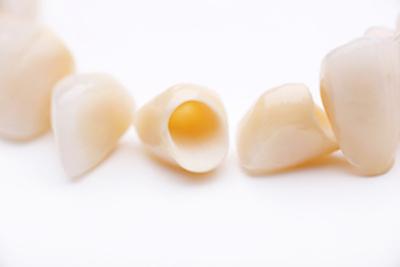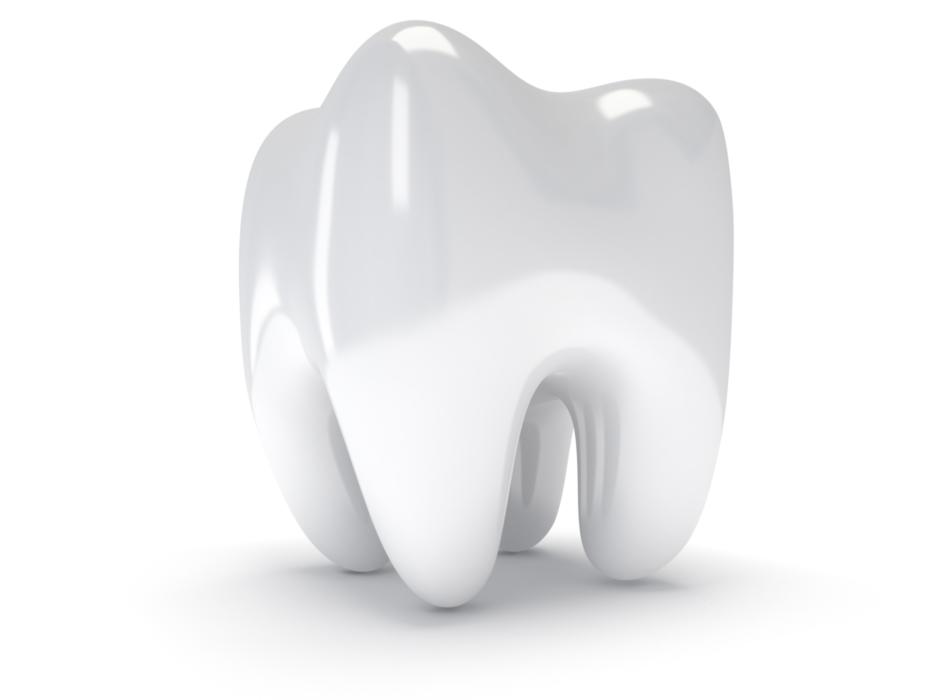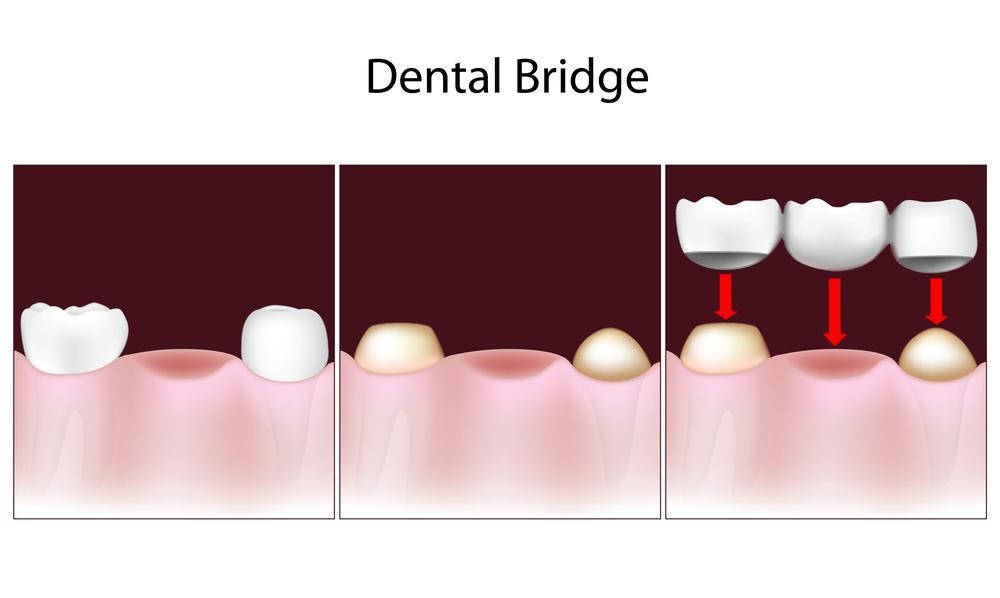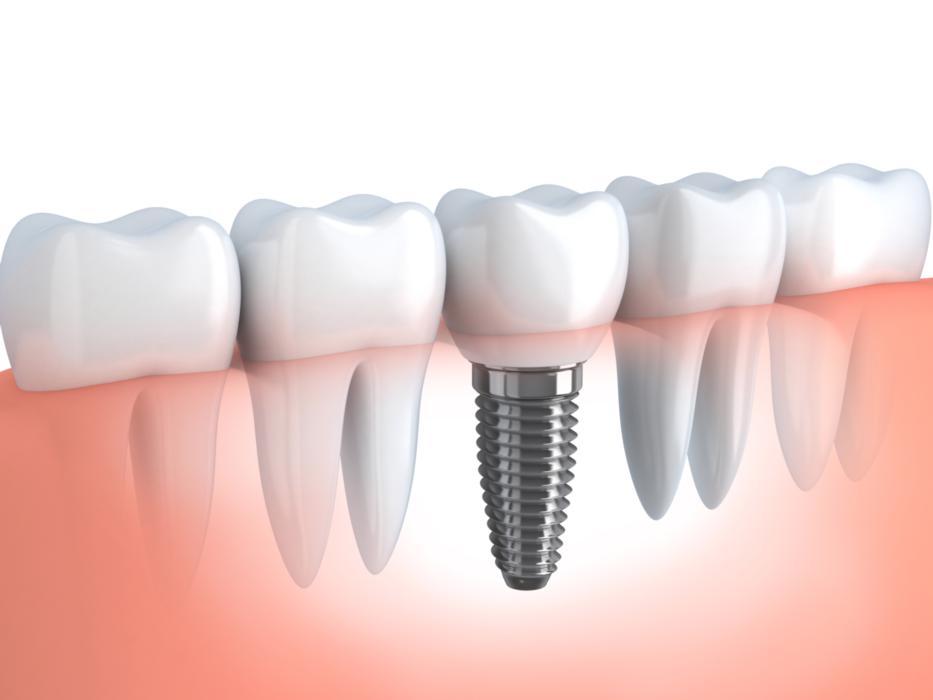Dental Crowns and Bridges in Royal Oak
We proudly serve the Royal Oak, MI community.
Dentists have been using dental crowns and bridges for decades to fix and replace broken and missing teeth. Crowns and bridges are often a crucial part of dental reconstruction. Recent advances in dental technology have significantly increased both the effectiveness and durability of these prosthetics, and the aesthetics have improved to the point where crowns and bridges are virtually indistinguishable from natural teeth. Royal Oak dentist, Dr. Suchi Chalasani DMD is skilled at placing both dental crowns and bridges. With appropriate home care and regular checkups, your crown or bridge can last for a lifetime.
- When Do You Recommend a Dental Crown?

- What Are Dental Crowns?
- What if I need Multiple Dental Crowns?
- What Is the Process for Dental Crowns?
- Dental Implant Crowns to Replace Missing Teeth
- What Are Dental Bridges?
- What Is the Dental Bridge Process?
- How Do I Care for Crowns and Bridges?
- How Do I Arrange a Consultation?
When Do You Recommend a Dental Crown?
Most often, Our Royal Oak Dentists use crowns to fix a broken tooth or to improve the appearance of the smile. Here are some of the instances we use dental crowns in our dental office.
- Broken or fractured teeth
- Deeply decayed teeth
- Worn down teeth
- Discolored and chipped teeth
- Irregularly shaped teeth
- Root canal-treated teeth
- Dental implant restoration
If patients opt not to proceed with a recommended dental crown, the tooth may continue to break down over time until an extraction is required. Typically, we recommend dental crowns at Family Dentistry of Royal Oak to prevent the need for extraction. Saving a tooth is almost always more economical and less invasive than replacing a missing tooth.
What Are Dental Crowns?
 A crown (also sometimes referred to as a “cap”) is an artificial tooth that is placed over the top of the natural tooth structure. Crowns are shaped like real teeth. Dr. Chalasani meticulously matches the dental crown to fit perfectly with the opposing teeth for ideal chewing function.
A crown (also sometimes referred to as a “cap”) is an artificial tooth that is placed over the top of the natural tooth structure. Crowns are shaped like real teeth. Dr. Chalasani meticulously matches the dental crown to fit perfectly with the opposing teeth for ideal chewing function.
In the past, crowns were often made of metals including stainless steel and gold. While durable, metal crowns would stand out and leave a mark on the smile. While ceramic-fused-to-metal crowns were an aesthetic improvement, they tended to leave a dark gray mark at the gumline that gave away the fact that you’d had dental work done.
Today, all-ceramic crowns are available that are created to blend in beautifully with your own natural teeth for a flawless finish. Ceramic crowns are also durable, and with some common sense caution and proper dental hygiene, they can last many years before they need to be replaced.
What if I Need Multiple Dental Crowns?
Dr. Chalasani also uses dental crowns as part of a full mouth rehabilitation. When patients have chronic teeth grinding habit that damages their teeth, the bite can over-close and cause painful jaw joints and joint deterioration over time. Not to mention that chewing can feel painful on sensitive teeth that have exposed dentin. For many patients, the dietary implications of damaged teeth are one of the most difficult adjustments to make because it can mean giving up favorite foods and sticking to a soft diet.
Placing crowns on the teeth used in the chewing process – primarily molars (at the back of the mouth) and bicuspids – can benefit from restoration with dental crowns. Improving the shape and size of the chewing teeth can reopen the bite and allow the jaw to seat naturally. Covering damaged teeth with dental crowns will also improve dietary options and make chewing more comfortable. Often, a full mouth rehabilitation will also include veneers across the front teeth for both guidance and aesthetics.
What Is the Process for Dental Crowns?
To place a crown, we will shape your tooth so that the crown fits over it snugly and securely. The next step will be taking impressions of your teeth to send to the lab we use to craft our dental crowns and bridges. A precise shade will allow our dental lab to create a dental crown that complements your smile. The color and shading will look incredibly natural and realistic, so that your dentistry enhances, rather than takes away from, your smile.
If necessary, we will fit a temporary crown over your shaped tooth to protect it and reduce sensitivity. It is best to avoid chewing sticky or tough foods on a temporary crown because it can come off.
Once your final dental crown is complete, we’ll remove the temporary crown and place the permanent crown. We’ll check the fit and make sure that everything is perfect before we send you on your way. You can eat normally, though it is best to avoid chewing ice or hard candy because it can break your crown just like it can break your natural teeth.
Dental Implant Crowns to Replace Missing or Broken Teeth
Crowns are also used as part of a dental implant system, a modern technology that allows us to replace a missing tooth with a fully functioning lookalike that integrates into your jaw to become a permanent part of your mouth. The dental implant process includes the surgical placement of the dental implant, healing time (about 3-4 months), and restoration with a dental implant crown to restore chewing function and complete the smile.
If you have a missing tooth and want the most long-term and functional replacement, we provide dental implants and crowns in our Royal Oak, MI dental office.
What Are Dental Bridges?
A bridge is one or more artificial teeth that fill in the spaces left by missing teeth. Like crowns, today’s bridges are designed to blend in beautifully with your own teeth. The bridge is held in place by crowns affixed to either the adjacent teeth or dental implants.
Essentially, a dental bridge will close the gap in your smile and keep your remaining teeth from shifting, which is common when a space is left between teeth. Bridges come in a variety of styles, and we’ll discuss these with you at your appointment, show you the style we recommend for you, and explain the benefits and limitations of each.
What Is the Dental Bridge Process?
Like dental crowns, we will need to prepare the natural teeth used to anchor the dental bridge in place. This involves reshaping the tooth for crowns to fit properly. Rather than single dental crowns, a dental bridge will consist of a single unit of three or more teeth and will be placed over the prepared teeth to close the gap in the smile.
How Do I Care for Crowns and Bridges?
Once placed, bridges and crowns become a permanent part of your mouth, and you’ll care for them exactly as you would for your own natural teeth. Continue to brush and floss your teeth as directed by Dr. Chalasani and your dental hygienist and visit us twice a year for regular cleanings and examinations.
Your dental bridge will require the use of special floss or a small brush to remove plaque and food debris from around the bridge.
During your exams, we’ll check the condition of your dental work to look for any signs of damage or weakness. If you are experiencing any problems with your crowns or bridge, let us know right away so we can diagnose the problem and fix it quickly.
Schedule a Consultation in Royal Oak, MI
If you need some help restoring the functionality and appearance of your teeth, please call Family Dentistry of Royal Oak today to set up your consultation appointment with Dr. Suchi Chalasani. We offer early morning and evening hours to accommodate the busy families of Royal Oak, Ferndale, Clawson, and the surrounding communities.

 After filling the tooth with a rubberlike dental material, the cavity must be fully closed. Closing the cavity and restoring the tooth serves a number of purposes. It protects the tooth from outside influences that could result in infection in the future. Restorations are typically immediately placed after endodontic treatment to prevent any chance of contamination that could result in infection or otherwise compromise the tooth.
After filling the tooth with a rubberlike dental material, the cavity must be fully closed. Closing the cavity and restoring the tooth serves a number of purposes. It protects the tooth from outside influences that could result in infection in the future. Restorations are typically immediately placed after endodontic treatment to prevent any chance of contamination that could result in infection or otherwise compromise the tooth.
 Your Royal Oak dentist offers a variety of tooth replacement options.
Your Royal Oak dentist offers a variety of tooth replacement options.


 smile that you hide your teeth, or you’ve stopped smiling altogether. Your lack ...
smile that you hide your teeth, or you’ve stopped smiling altogether. Your lack ...